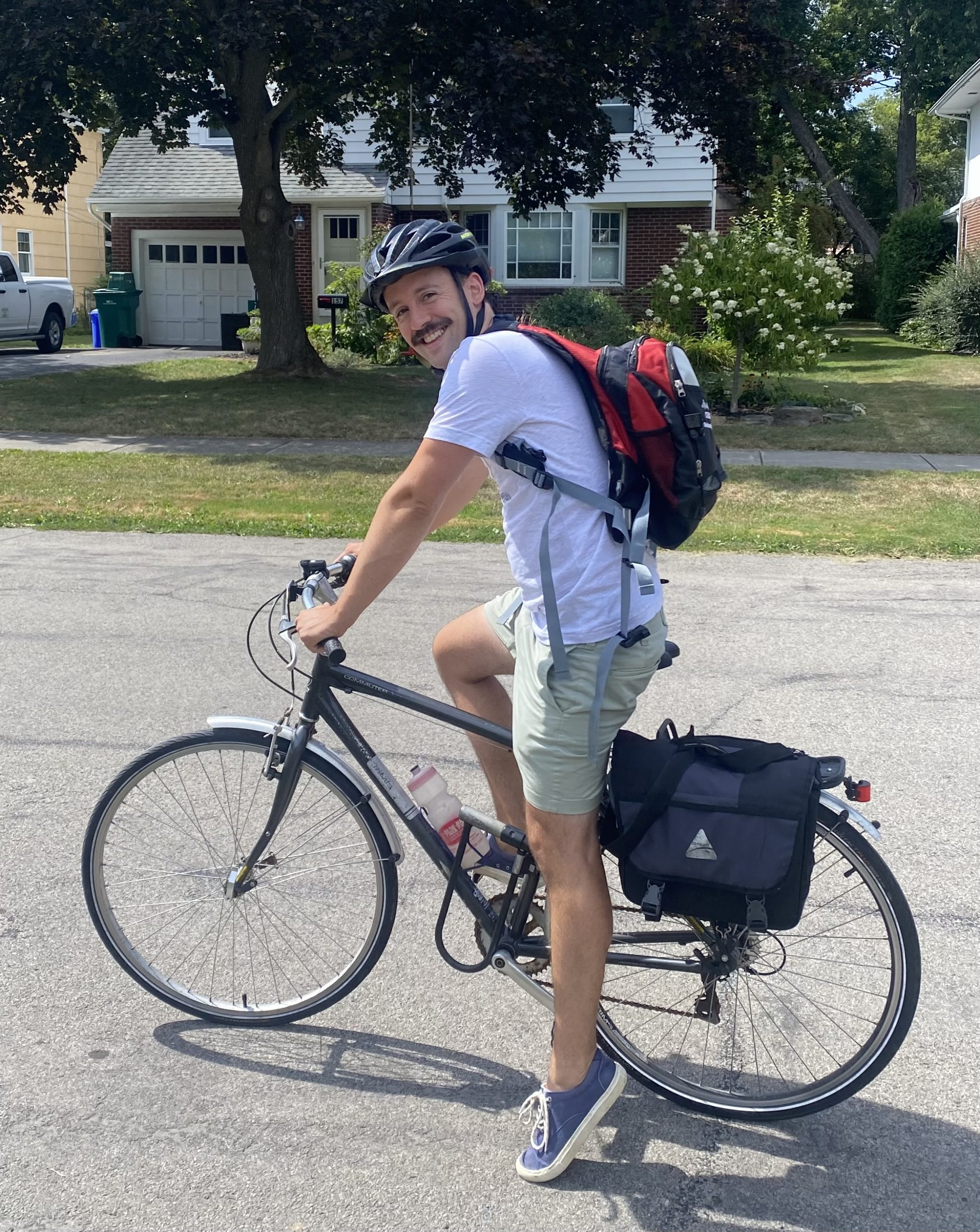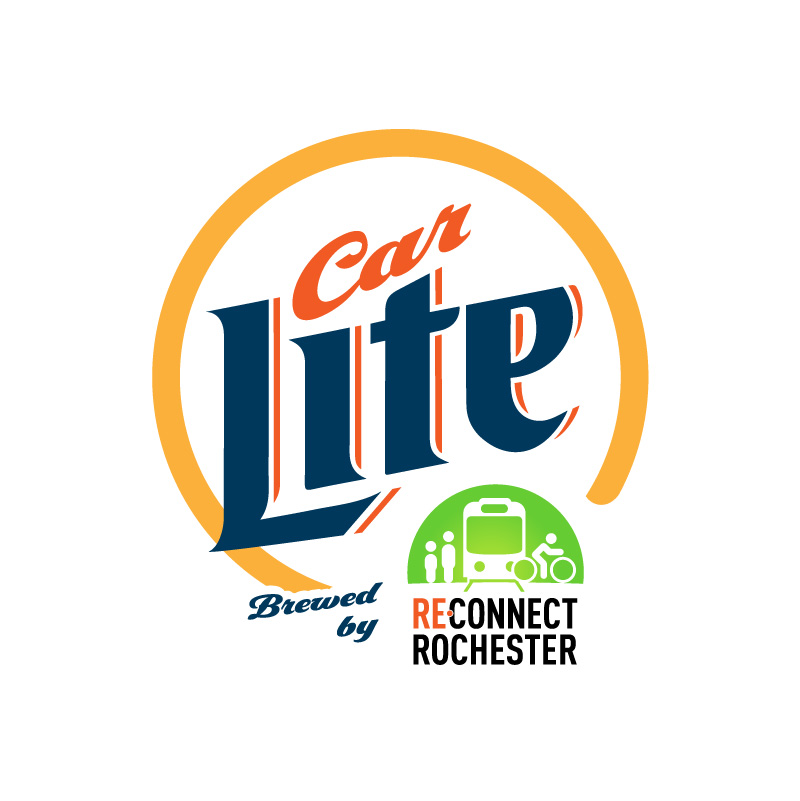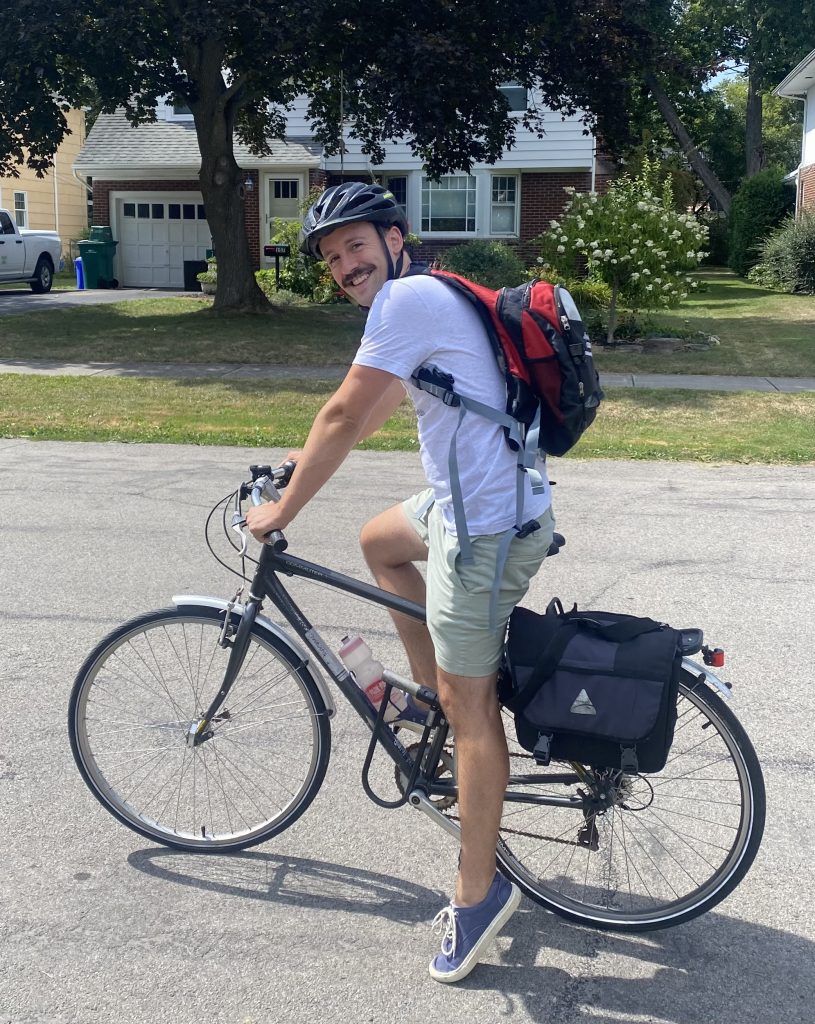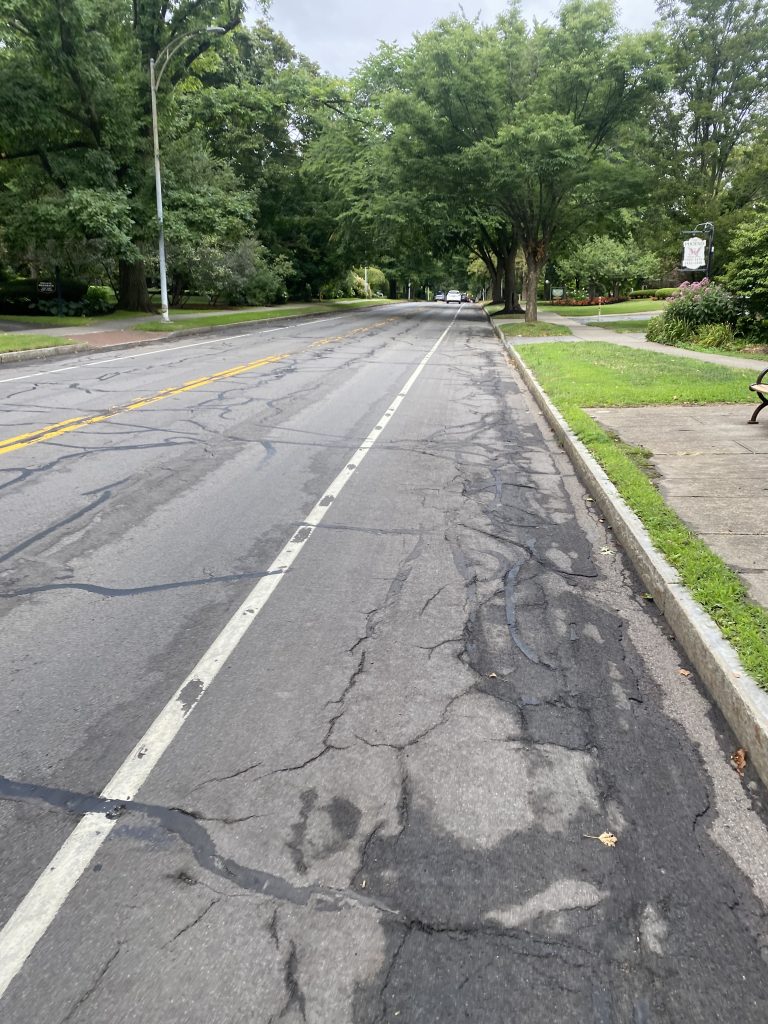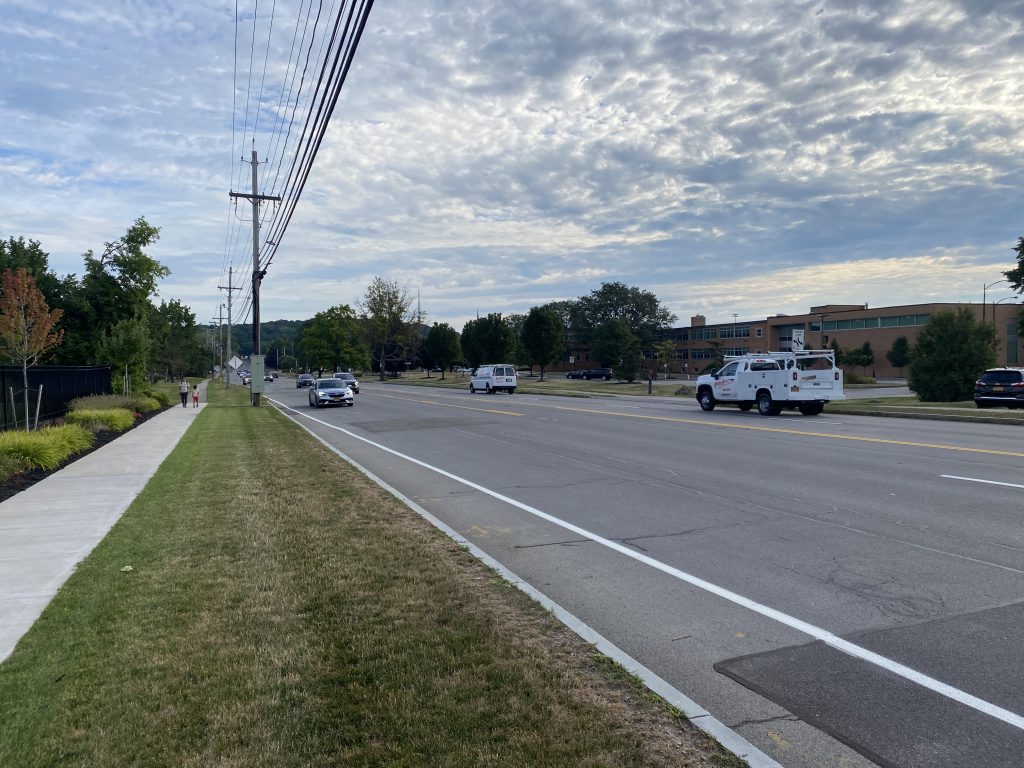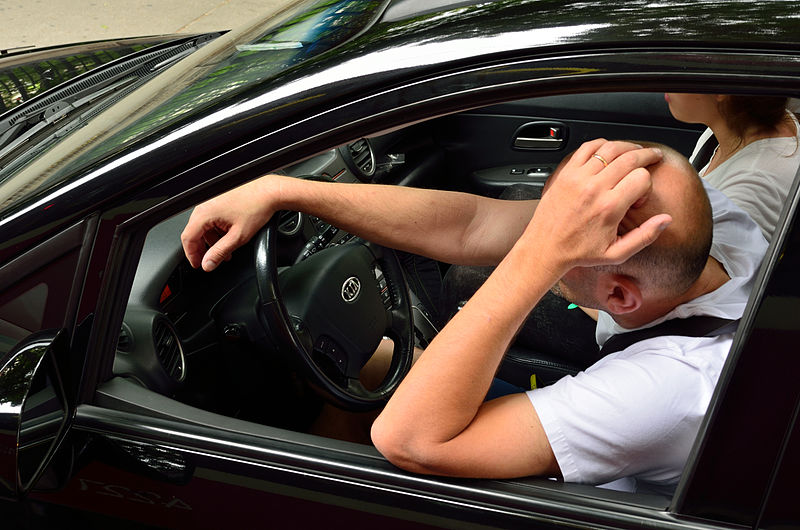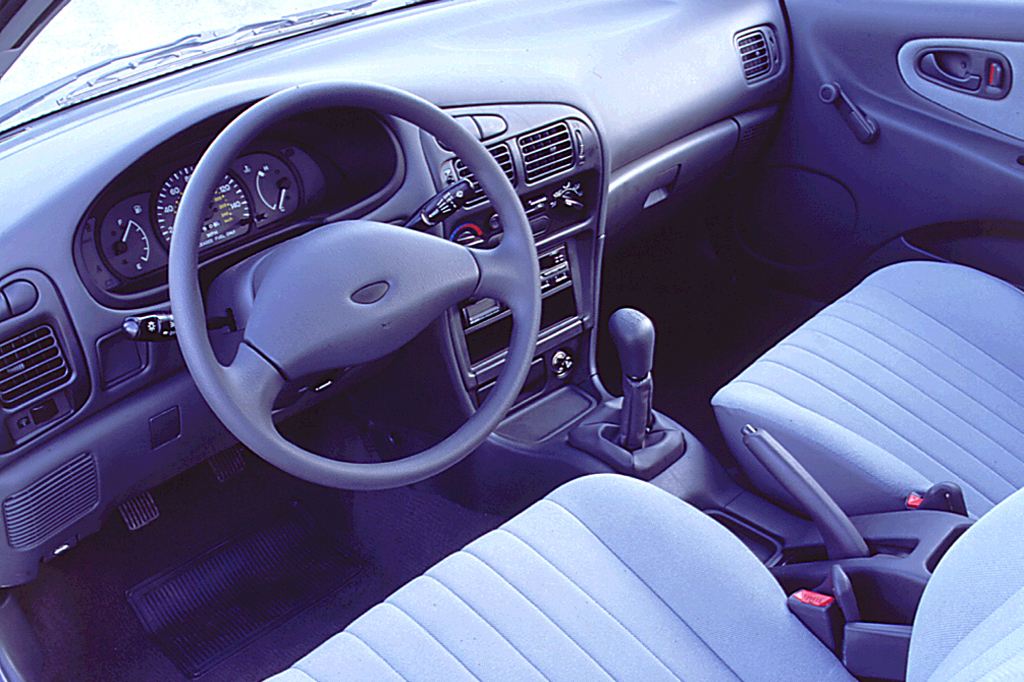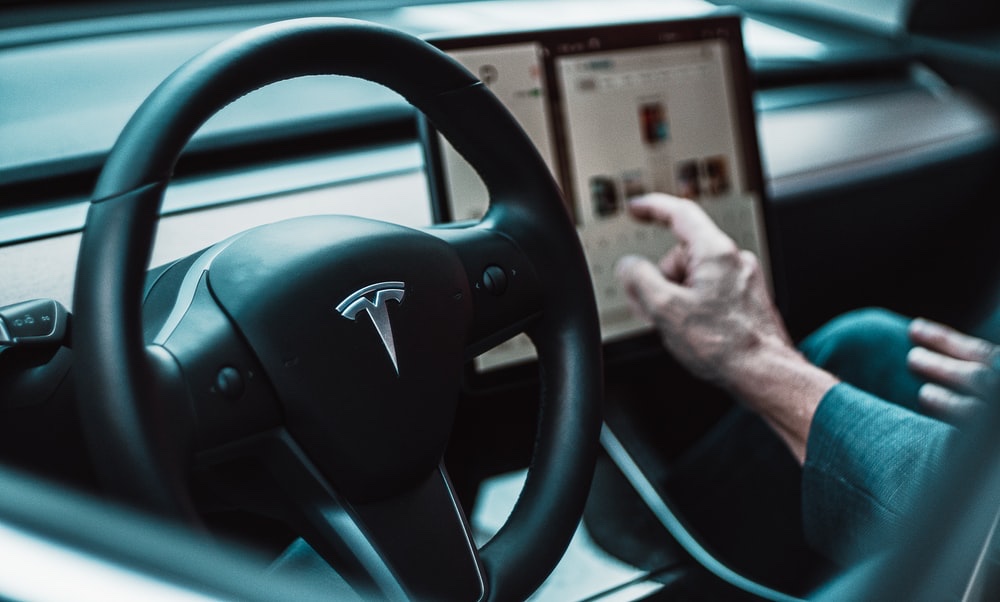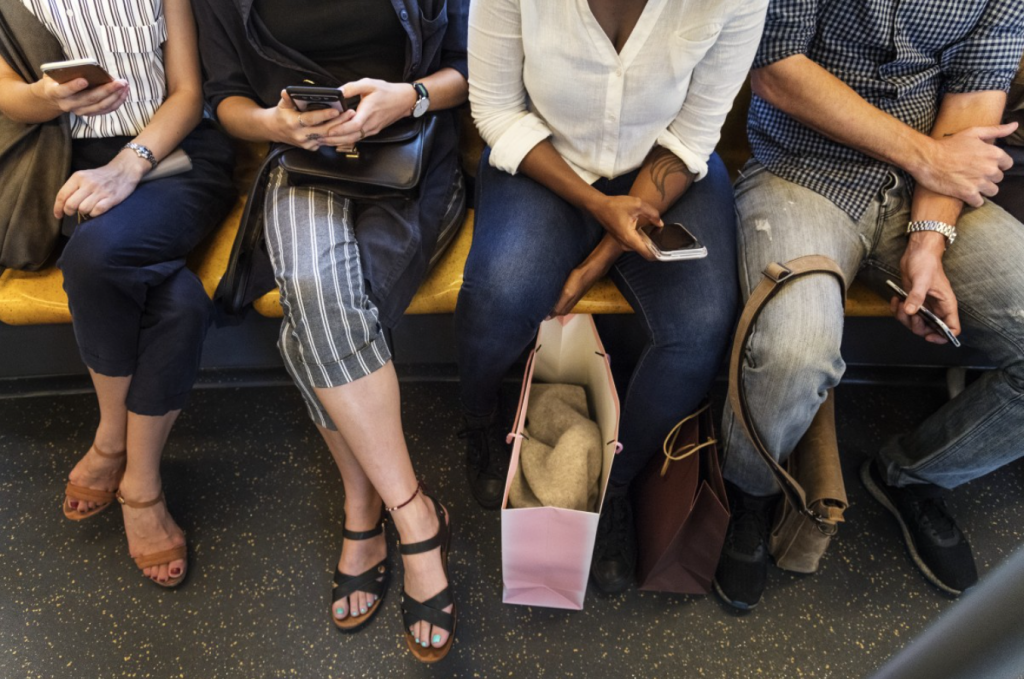Car Lite Rochester is a blog series that highlights the stories of Rochesterians living a car-lite lifestyle. The term “car lite” encompasses a variety of multimodal transportation lifestyles, featuring little dependence (but not NO dependence) on a car. It typically looks like sharing one car within a household or only using a car when absolutely necessary.
So, we hope you’ll continue to follow along. Maybe you will be inspired to join our bloggers in living a car-lite lifestyle!
Wanna rep it? Check out our newest t-shirt in our online shop.
Car Lite Rochester: From Big to Midsize City
By: Chaz Goodman
I love biking. I do it for fun, and for about eight years it was the only way I got around. I love being a part of my surroundings instead of being isolated in a car. I love seeing a friend on a bike or on the sidewalk and calling a quick hello. I love hearing the birds sing and feeling the breeze. I love hearing a busker playing on the street or snippets of a conversation from outdoor diners on Park Avenue. I love that instead of finding time in my busy schedule to work out in a stale indoor space, I can get exercise during my commute. I love that when I’m not feeling active, I can take it easy, bike slower, and still get to work without much effort.
From Chicago to Rochester
I spent my twenties living car free in Chicago before my wife and I moved back to Rochester. Here our lives would be different. We now had a dog and we would be visiting multiple suburbs rather than mostly staying within the city. One of the first things we did was buy two cars, one for each of us.
I added my new car key to a key ring and put it in my back pocket. The key was large and hard to ignore when I sat back down. I shifted slightly and set off the alarm button on the remote. The symbolism of the moment was a little too on the nose for me. I started thinking about how I could get back to my car free lifestyle – or at least car lite.
Commuting by bike in Rochester wasn’t too much of an adjustment from Chicago. In warmer weather, I ride to work in gym clothes and keep my work clothes in a light drawstring bag to stay cool. When I get to work I splash a little water on my face and change in the bathroom. In the winter, I just throw on a jacket over my work outfit. I put my computer and lunch in my panniers. I take East Avenue which generally has a wide shoulder since cars can’t park there during work hours. It is quite spacious for a bicycle.
I am rarely carrying much so taking my bike to work is pretty easy. Even if I have to run multiple errands, I just make sure to bring my backpack. You’d be surprised how much stuff fits in those three bags (panniers and backpack). Due to commuter traffic, travel times are pretty similar on a bike vs a car (especially if I’m traveling within the city). I almost always bike when I go out for the evening and I never worry about where to park or how much it will cost.
Speaking of cost…that alone is a good reason to consider a car lite lifestyle. My bike initially cost me $200 and I’ve probably put about $500-$600 into it for repairs over the course of ten years. Imagine this minimal cost replacing how much you put toward car repairs/payments over even half that period of time.
Challenges & Allowances
I considered my other travel needs beyond commuting, night life, and errands. I’m a musician and I often play gigs where I have to set up my own sound. Here, I allowed that I would need a car to transport my full PA system and multiple instruments/microphones/stands/amplifiers.
My next challenge was visiting family in different suburbs. I started riding from my place in Brighton to my brother’s place in Irondequoit. It’s a long ride but I enjoy it. The only time I feel nervous on a bicycle is crossing under Route 104. There are a lot of drivers who are in a hurry to get on or off the highway and they just aren’t expecting a cyclist. Nonetheless, it’s definitely doable and 104 is only one small part of my ride. TIP: I stay safe by assuming a car doesn’t see me unless I have made eye contact with the driver.
My next allowance was to drive to my parents’ place in Webster because biking this route is unfortunately quite impractical. The Bay Bridge is obviously not built for bicycles and although Empire Boulevard has a wide shoulder, cars are often going upwards of 60 MPH. I’ve read a few sobering stories about collisions gone wrong there. Plus, biking in Webster itself makes me nervous.
If I took public transit I would need to take three buses for an hour, without any delays. There isn’t a bus that goes to my parent’s neighborhood so I would need to walk an additional five miles to their house which is not in the RTS demand area. Or I could drive and it would take 20 minutes. I can hardly blame someone who chooses to drive when we have made it so much easier than the alternative.
I decided that other than these allowances, I was going to bike even in challenging circumstances. I have a raincoat for rainy days, staying active on my bike keeps me warm in the winter, and I have multiple lights for night riding.
Then my son was born. Now the lack of protected bike infrastructure I had been blissfully unaware of as an able-bodied adult became glaringly obvious. I’m in the process of putting a toddler seat on my bike so my son can join me for errands in the city, but it’s still nerve-racking to consider. His daycare is located on a particularly busy four lane section of South Clinton Avenue so I plan to ride on the sidewalk with him for safety.
The Big Picture: Why Be Car Lite?
It’s hard not to feel a little frustrated at the decisions made for our communities. When I mention reducing car usage to people I often hear the counter argument: “don’t force your lifestyle onto the rest of us.” But we’ve already all but forced people to use cars with our street design and inefficient public transit.
Some people genuinely prefer driving and that’s fine. But there are plenty of people who would opt for transit or biking if they felt it was safe and convenient. Many people don’t realize how impractical cars are because they never considered a life without them. I was certainly one of those people before spending nearly a decade without a car.
Beyond their environmental impact, cars are just inefficient for most of our daily needs. Go to any public area and look at how much space is devoted to parking. Imagine if we could reduce that. Imagine how much more space we would have and how pleasant it would be. Imagine if drunk drivers weren’t a concern because most people weren’t driving when they went out. Imagine if children could travel with classmates via buses to their various after school activities rather than relying on overtaxed parents to transport them everywhere. Imagine if you didn’t have to drive to work every day and you could spend your commute on public transit; reading or daydreaming or writing or texting or sending emails. Imagine not needing to spend every day operating a dangerous machine that requires complete focus to stay safe. Imagine not needing to worry about car repair bills or auto insurance. Imagine a world where road construction is less common because there aren’t thousands of cars degrading the quality daily.
For those who say it’s impossible: consider the fact that our cities used to operate this way with a multitude of pedestrians, trains, buses, bicycles, and cars sharing public space. Even now our public school bus system shows us this is far from a pipe dream. Systemic change is difficult to imagine and even more difficult to enact but it’s certainly not impossible.
Eventually my son will be able to walk to school and take his own bike to get around town. Then I can reduce my car reliance even more. I hope to eventually go back to being car free when it’s possible. For now, I will continue to support institutions such as Reconnect Rochester that are working to correct the imbalance.


